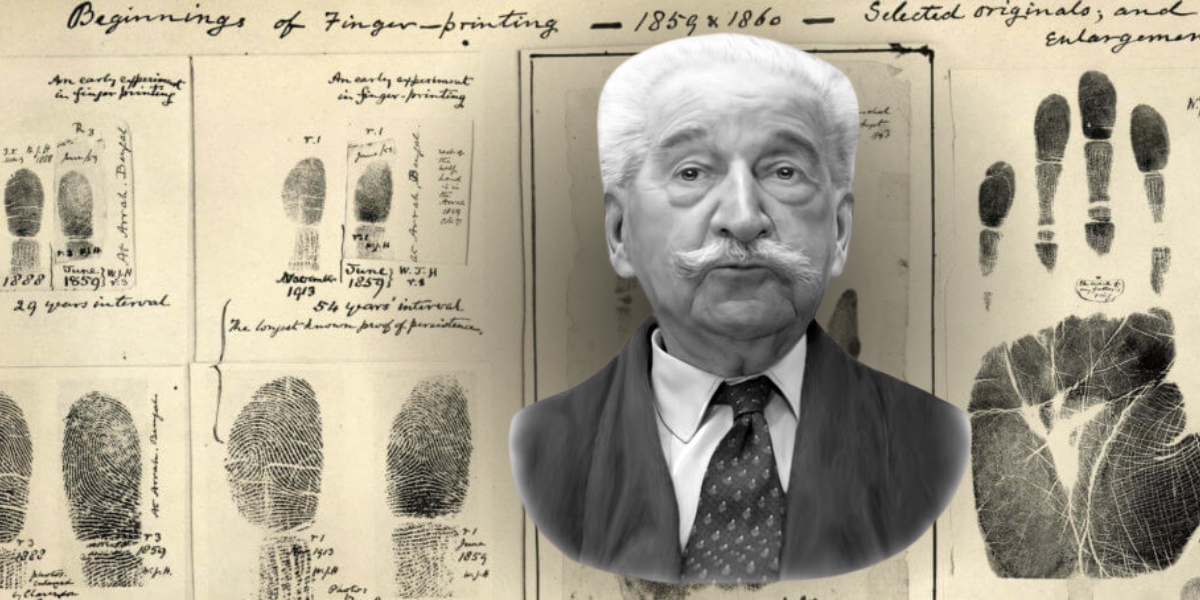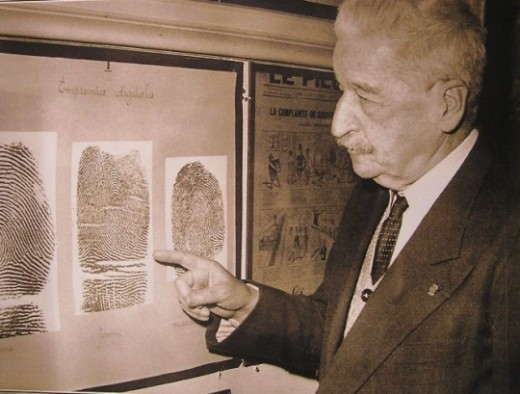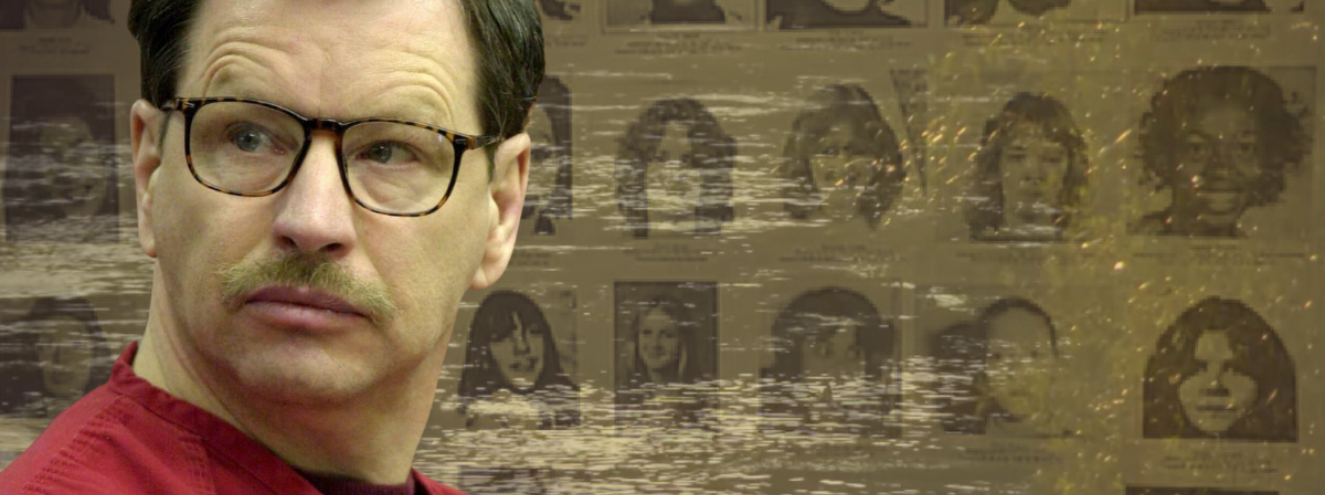By: Andrea Cipriano, MAFP
Everything — from fingerprints, to hair, to fibers, to blood at a crime scene — is a give and take between victim and offender.

When formulating Locard’s Exchange Principle, Edmond Locard wrote extensively about the idea of “microscopic exchange” that takes place when crimes are committed.
In summarizing Locard’s work, a criminalist colleague Paul K. Kirk wrote: “Wherever he steps, whatever he touches, whatever he leaves, even unconsciously, will serve as a silent witness against him.”
Poetic nature aside, this theory holds true.
What is Locard’s Exchange Principle?
Locard’s Exchange Principle states that “every contact leaves a trace.” This principle is the basis for much of modern forensic investigation, emphasizing that when two objects come into contact, there is an exchange of materials between them.
It’s the notion that when two entities interact, they invariably both leave behind physical evidence — a sometimes microscopic witness to their encounter.
The easiest way to think about this principle is using the example of dog or cat hair. Imagine going over to a friend’s house who has a white labrador, and you’re wearing black. By the time you get home, you’ll be finding white dog hair all over your clothes!
This isn’t particularly surprising, but what might shock you is finding the white dog hair on your couch a few days later! Even though your friend’s dog wasn’t over at your place, their hair still made its way in your space. And, whether you know it or not, your own hair could be found at your friend’s house (although likely not as prevalent as the dog’s hair).
Locard’s most famous article, “The Analysis of Dust Traces” contains a phrase some analysis can recite by heart:
For the microscopic debris that covers our clothes and bodies are the mute witnesses, sure and faithful, of all our movements and all our encounters.
This forensic exchange knowledge empowers investigators to look for important evidence like suspect DNA, fingerprints, hair, biological material, and fibers at a crime scene — while also looking for the same evidence from a victim when they zero in on a suspect.
Meet Edmond Locard
Edmond Locard, born in 1877, was a French forensic scientist and leader in the field. His work transformed the way people thought about science in the context of crimes — so much so that he became known as the “Sherlock Holmes of France.”
Today, he is considered a pioneer of modern forensic science.
Locard established the first police crime laboratory in Lyon, France, in 1910, which marked a significant advancement in the field. He believed in the systematic collection and analysis of physical evidence from crime scenes to aid in solving crimes. His work laid the foundation for today’s forensic techniques such as fingerprint analysis, trace evidence examination, and more.

Edmond Locard’s contributions to forensic science have had a lasting impact on criminal investigations and have influenced the development of forensic techniques used by law enforcement agencies worldwide.
2 Famous Cases with Locard’s Exchange Principle

Green River Killer
It took over two decades to find the identity of the monster who haunted the Pacific Northwest.
The Green River Killer was ruthless Most of his victims were young, vulnerable, and overlooked by society. Many were sex workers, walking along the same 3-4 mile area called the Pacific Highway strip — or simply “the strip.”
After his arrest, Ridgway ultimately provided details that only the true killer would know on 48 separate murders.
Ridgway was connected to the death of Marcia Chapman because his bodily fluids were found on her. His DNA was also found on 2 other women found in the Green River.
But, nearly 20 years before he was arrested, the Washington State Patrol Crime Laboratory overlooked key microscopic paint evidence found on the clothing of his very first victim — and seven others who followed.
This paint evidence was unique industrial spray paint that would’ve linked Ridgway to these murders, exemplifying Lochard’s Exchange Principle and proving that even the smallest bit of evidence could be the most telling.

Rex Heuermann, Suspected Killer
Rex Heuermann, 59, is a suspected serial killer charged with the murders of three of the 11 Long Island Serial Killer / Gilgo Beach murders.
He became the number one suspect after investigators discovered unknown female hairs on the remains of Maureen Brainard-Barnes, duct tape used to bind Megan Waterman, and inside the burlap wrapping near Amber Costello’s hair. Forensic analysis proved that all of the unknown female hair found on the victims matched Heuermann’s wife, Asa Ellerup, who has since divorced him following his arrest. Police say Ellerup had nothing to do with the homicides and was out of the state during the time of the victims’ deaths.
With that in mind, this type of trace evidence and evidence transference is exactly what Lochard’s Exchange Principle discusses.
Paul K. Kirk’s criminalist colleague summarizes the principal with dramatic language, saying:
Not only his fingerprints or his footprints, but his hair, the fibers from his clothes, the glass he breaks, the tool mark he leaves, the paint he scratches, the blood or semen he deposits or collects. All of these and more, bear mute witness against him. This is evidence that does not forget. It is not confused by the excitement of the moment. It is not absent because human witnesses are. It is factual evidence. Physical evidence cannot be wrong, it cannot perjure itself, it cannot be wholly absent. Only human failure to find it, study and understand it, can diminish its value.
Love this post? Meet the Author.
Andrea Cipriano is the Digital Content Specialist at Uncovered, where she writes for the twice-weekly true crime newsletter, The Citizen Detective. Andrea graduated with a Master of Arts in Forensic Psychology from John Jay College of Criminal Justice, where she focused on researching and peeling back the criminal mind. Andrea believes that it’s never too late for justice.
Uncovered has built a community for thoughtful true crime discussion, advocacy, and comprehensive cold case research. We are the hub for novice and experienced researchers alike, helping members further develop their citizen detective skills. Sound like something you’re interested in? Join our community. Together, we can make a difference.
